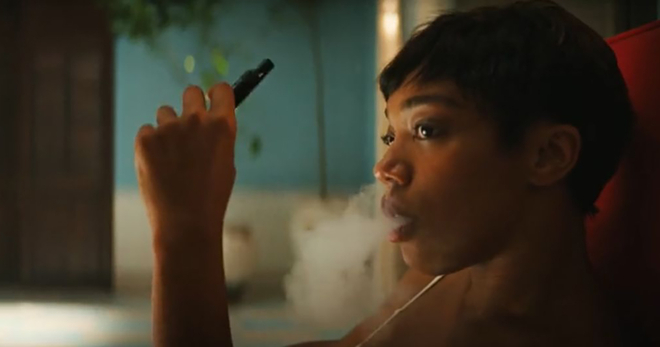Tobacco imagery lights up Oscar-nominated movies, including 80% of Best Picture nominees
Eight of the 10 films nominated for Best Picture at the 2022 Oscars and more than half (61%) of all this year’s Oscar-nominated feature films contain tobacco imagery, including “West Side Story,” “King Richard,” and “Don’t Look Up,” according to a Truth Initiative analysis that points to a troubling trend of the renormalization and glamorization of tobacco use in entertainment media and pop culture.
Tobacco imagery remains a common sight in top movies despite established research that shows exposure to smoking in movies can cause young people to start using tobacco, a conclusion reached almost a decade ago in a 2012 Surgeon General report. At a time when youth e-cigarette use remains at epidemic levels, even youth-rated movies feature tobacco. Of this year’s Oscar-nominated films that are rated and contain tobacco imagery, nearly 40% have a PG-13 rating. These include Marvel Studios’ superhero film “Shang-Chi and the Legend of the Ten Rings” and the latest Bond thriller “No Time to Die.” Other PG-13-rated movies with tobacco include “CODA,” “King Richard,” “West Side Story,” “Flee,” and “tick, tick…Boom!”
How smoking on screen is linked with youth tobacco use
Smoking, often portrayed as glamorous and edgy, remains pervasive onscreen even as research warns that exposure to it can influence young people to start smoking and vaping.
In addition to the research linking exposure to smoking in movies with a higher likelihood of starting to smoke, research also establishes a link between tobacco imagery and vaping. A landmark Truth Initiative study published in Preventive Medicine in 2020 established that exposure to tobacco imagery in popular streaming and TV shows can triple a young person’s odds of starting to vape, a concerning finding given the popularity of e-cigarettes with young people. Nearly 20% of high school seniors are current e-cigarette users, according to 2021 data from Monitoring the Future.
The analysis of Oscar-nominated movies follows Truth Initiative’s latest report on tobacco imagery across the most popular streaming and broadcast shows. As new releases were increasingly streamed at home, the fourth edition of the report, While You Were Streaming: Nicotine on Demand, included movies for the first time. According to an independent analysis included in the report by the National Opinion Research Center (NORC) at the University of Chicago, more than a third (38%) of top grossing movies in 2020 depicted tobacco with nearly 1,000 incidents. These include 10 movies that are youth-rated, such as Amazon’s PG-rated “The Personal History of David Copperfield” and “Wonder Woman 1984.” Beyond tobacco depictions in PG movies, many of the top offenders included movies that appeal to youth, such as 2021 Oscar-winner “Promising Young Woman.”
Action needed on tobacco imagery in movies
Truth Initiative joins several other public health groups in endorsing measures to reduce youth exposure to tobacco in movies, including:
- Educating writers, directors, studios, producers, and actors about the role tobacco use in movies plays in youth tobacco use rates and encouraging them to leave tobacco out of their work
- Prohibiting the identification of tobacco brands in movies
- Ensuring that tobacco companies and their representatives have not paid media companies in exchange for using or showing tobacco products in movies
- Having movie studios certify that no payment for brand placement took place at any point during production
- Requiring strong anti-tobacco ads to run before any film with tobacco, regardless of its rating
- Showing evidence-based and proven-effective tobacco prevention ads from public education campaigns like truth® to counteract the impact of tobacco imagery in a film
- Giving an R rating to all movies that contain smoking unless the movie clearly depicts the dangers and consequences of tobacco use or accurately depicts a real historical figure who actually used tobacco
- Disallowing production subsidy policies to support movies that contain tobacco use
See our “Tobacco in Pop Culture: Action Needed” statement and our latest report on tobacco imagery on screen “While You Were Streaming: Nicotine on Demand” for more details.
More in tobacco in pop culture
Want support quitting? Join EX Program
By clicking JOIN, you agree to the Terms, Text Message Terms and Privacy Policy.
Msg&Data rates may apply; msgs are automated.



